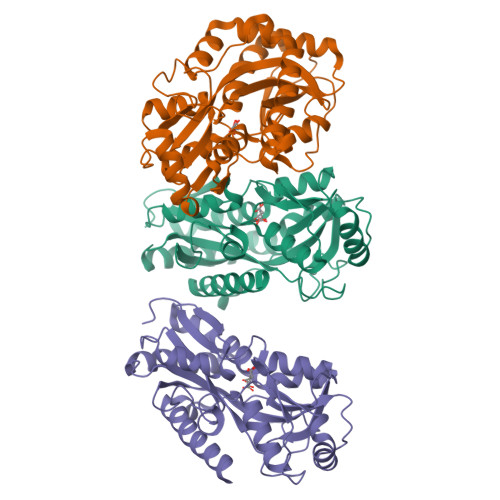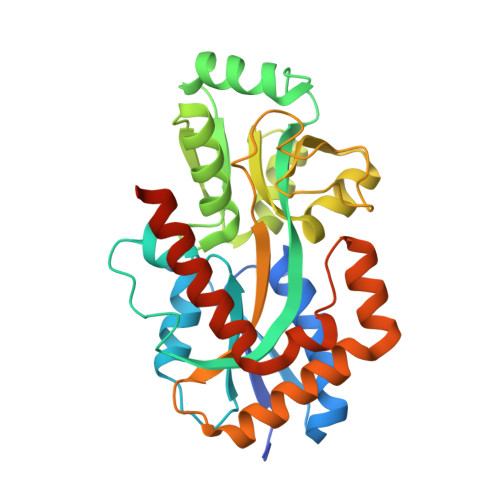A New Mechanism for High-Affinity Uptake of C4-Dicarboxylates in Bacteria Revealed by the Structure of Rhodopseudomonas palustris MatC (RPA3494), a Periplasmic Binding Protein of the Tripartite Tricarboxylate Transporter (TTT) Family.
Rosa, L.T., Dix, S.R., Rafferty, J.B., Kelly, D.J.(2019) J Mol Biology 431: 351-367
- PubMed: 30471256
- DOI: https://doi.org/10.1016/j.jmb.2018.11.016
- Primary Citation of Related Structures:
6HKE - PubMed Abstract:
C4-dicarboxylates play a central role in cellular physiology as key metabolic intermediates. Under aerobic conditions, they participate in the citric acid cycle, while in anaerobic bacteria, they are important in energy-conserving fermentation and respiration processes. Ten different families of secondary transporters have been described to participate in C4-dicarboxylate movement across biological membranes, but only one of these utilizes an extracytoplasmic solute binding protein to achieve high-affinity uptake. Here, we identify the MatBAC system from the photosynthetic bacterium Rhodopseudomonas palustris as the first member of the tripartite tricarboxylate transport family to be involved in C4-dicarboxylate transport. Tryptophan fluorescence spectroscopy showed that MatC, the periplasmic binding protein from this system, binds to l- and d-malate with K d values of 27 and 21 nM, respectively, the highest reported affinity to date for these C4-dicarboxylates, and to succinate (K d = 110 nM) and fumarate (K d = 400 nM). The 2.1-Å crystal structure of MatC with bound malate shows a high level of substrate coordination, with participation of two water molecules that bridge hydrogen bonds between the ligand proximal carboxylic group and the main chain of two conserved loops in the protein structure. The substrate coordination in MatC correlates with the binding data and explains the protein's selectivity for different substrates and respective binding affinities. Our results reveal a new function in C4-dicarboxylate transport by members of the poorly characterized tripartite tricarboxylate transport family, which are widely distributed in bacterial genomes but for which details of structure-function relationships and transport mechanisms have been lacking.
Organizational Affiliation:
Department of Molecular Biology and Biotechnology, The University of Sheffield, Firth Court, Western Bank, Sheffield, S10 2TN, UK.




















